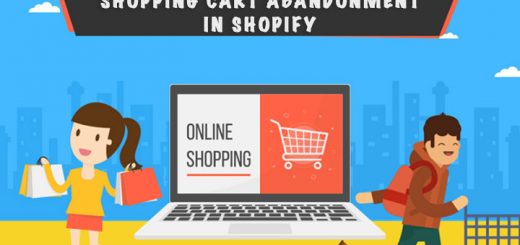8 eCommerce Customer Retention Strategies
There are a number of valuable customer retention strategies that can give you an advantage in getting new customers to come back for more.
1. Provide exceptional customer service
By far, the most important of all customer retention strategies is providing top-notch customer service. HubSpot research found that 93% of consumers say they’re more likely to become repeat customers of businesses that have good customer service. If customers have a question or problem, they want to know they can trust a company to respond quickly to resolve it. Often customers won’t begrudge a brand the initial problem they experience if the response is good.
There are a few good ways to improve the customer service experience for your eCommerce business:
Hiring good people
Your brand will be judged based on the performance of the people delivering customer service. When hiring for the role, prioritize finding people who are skilled and empathetic. And make sure you treat employees right, so they want to perform well for the business when working with customers.
Hura Apps is a Vietnam-based Web & Mobile App development team. With the top skilled developers, we have done many projects for clients worldwide with high quality, on time and budget. We build world-class products for global market. Hura Apps is proud to be team that Shopify has recognized as Shopify Expert. Hura Apps provides e-commerce solutions on Shopify platform for small and medium-sized enterprises. Hura Apps is also a Shopify Partner with many apps published on Shopify Apps Store. The Shopify apps developed by Hura Apps are being used by nearly 3,000 businesses and these apps have helped businesses increase sales very well. |
Being easy to reach
Have you ever spent way too long trying to track down the right phone number or email address to contact a company’s customer service? Or spent long minutes on hold waiting to reach a human being? How much time it takes a customer to reach someone to begin with is a big part of the customer service experience. Make your contact information easy to find, and be available in as many channels as possible.
Practicing active listening
When someone’s upset, often the thing they want most is to feel heard. Train everyone in customer service at your company to slow down and really listen to what your customer base has to say. Don’t try to offer a solution before they’ve had time to finish, and repeat back the problem to show they’ve been heard. It’s a simple step to include in the process, but one that goes a long way.
Responding fast
In our era of constant accessibility, customers expect to hear back from businesses fast. Try to have enough staff to ensure that you can reply to every customer question as quickly as possible. Even if you can’t provide a resolution right away, make it standard practice to send a response saying you’re working on it.
Empowering customer support staff to go the extra mile
If you hire great people, but place limits on what they can offer customers to resolve an issue, they won’t be able to perform at the level you need. Give them room to do what they feel is best, even if that means discounts or returns that cost the company money. That can be frustrating in the short term, but if it builds customer loyalty and good will in the long term, it will pay off. Hire good people and trust them to do their job well, and they’ll deliver the kind of service people remember into the future and tell their friends about.
A bad customer service experience could drive a customer away from your brand forever. A good one is expected. But a great one—the kind that’s truly memorable—that’s how you build loyalty.
2. Start a subscription business
What’s the easiest way to make sure existing customers will keep coming back? Make it automatic!
A subscription business model doesn’t make sense for every type of eCommerce business. If you sell mattresses, for instance, people won’t need a new one again for years.
But there are lots of products that run out or wear out regularly enough that selling them on a subscription basis means more consistent purchases for you and greater convenience for your loyal customers. This works for necessities like toiletries and food items, fun stuff like books and games, as well as for digital products like software.
If you do start a subscription business, it’s even more important to provide exceptional customer service. The whole business model is based on customers wanting to maintain an active relationship with your brand for the long term. But do also make it easy for customers to cancel—if they feel like they have to jump through hoops, it will result in a negative customer experience and ensure they won’t recommend you to friends or renew the subscription at a later point.
Read more: Top 4+ Subscription apps for your Shopify store
3. Set up a subscribe-and-save option
Even if your business isn’t fully based on a subscription model, you can still get some of the benefits of eCommerce subscriptions by incentivizing customers to treat their purchase as a subscription.
By offering a discounted rate or free shipping in exchange for setting up automatic future deliveries at the interval of their choice, you make it extremely easy for customers to commit to buying from you again.
They like that loyalty translates to savings, and they can skip the work of putting in a manual order next time they’re running low on your product. And you’ll increase sales by removing all friction from future purchases. Everyone wins.
4. Create a loyalty program
Loyalty programs are common across industries and take a few different forms. For eCommerce websites, they can be a transformative marketing strategy. You can give loyal customers the opportunity to earn points as they buy from you and redeem them later. You can provide different levels of rewards based on how much people buy from you, like a VIP program.
Or you can go the punch-card route, and provide customers with a free item once they’ve purchased a predetermined number of products (buy six sandwiches, get the seventh free!).
Since eCommerce businesses can’t exactly hand out punch cards like sandwich shops can, you’ll need the right technology to power a customer loyalty program. The future of eCommerce business depends on showing your customers that you value them. Develop a strategy for what type of customer loyalty program you want to create, then research the eCommerce software available to find the right tool for the job.
Once you have a plan in place and the right tool to realize it, promote your loyalty program heavily to new and existing customers. Put a sign-up form right on your website, share it with your email list, and mention it on the confirmation page after someone makes a purchase. Give people an incentive to sign up—maybe a discount on their next purchase, or a free goodie for getting started.
Then check in with them in the first few months. Gather customers’ feedback on how they’re liking the loyalty program and consider if you should tweak how it works to get better results.
Whatever route you take, loyalty programs give people more of a reason to buy from you. They get to feel special as they accrue more points or reach that VIP level, and they associate that good feeling with your brand. And when you reward people for spending more money with you they, unsurprisingly, spend more money with you. It just makes sense.
5. Use email marketing
Email marketing is the best tactic for staying top of mind with consumers, and keeping the customer relationship going. Make sure you give customers a chance to opt-in—don’t just assume that they’ll want to receive your emails because they made one purchase. That’s a good way to get marked spam. But promote your email list on your website, the confirmation page after they make a purchase, and in the confirmation email.
Once they sign up, you have an in to keep in touch. Make good use of it. Send valuable content, special offers, and updates they’ll care about. Include links back to your website to encourage them to come back, but don’t be too pushy. Make your emails more about building a customer relationship than pushing the next sale.
6. Offer exclusive discounts
This is another good way to show customers you care about them. Provide them special offers others don’t get.
Make it clear they’re receiving a discount out of appreciation for the loyalty they’ve shown your business. You might consider sending them discount codes for a day you know is important to them, such as their birthday (if you know it) or the anniversary of when they first bought from you.
7. Provide advance access and special giveaways
While discounts are nice, customers are used to seeing them from other brands.
Another way to make them feel special is to provide advance access or set up special giveaways only available to customers. If you’re launching a new version of the product or service they bought from you, offer them the chance to buy before the general public gets access. Or set up a contest that only customers qualify for that comes with a big prize, like a paid vacation or an expensive item.
Insider access makes people feel good. By creating an insider circle of sorts and inviting your customers in, you’re further solidifying their relationship with your brand and giving them a good reason to keep coming back.
8. Actively solicit customer feedback
Providing great customer experiences involves doing a lot of proactive work on your end. But it’s crucial that you not get so focused on what you’re doing that you forget about who’s on the other end of those customer retention strategies.
Everything you’re doing is about your customer base. Let them have a say in things too. Actively check in with your customers to find out how they’re doing. Use customer surveys after each purchase to get a read on how satisfied they are. But follow those up by reaching out to customers to set up actual conversations about their experience with your brand, and with any programs you’ve set up to increase customer retention.
Also pay close attention to your reviews. A lot of the time, you don’t have to go to the customer to find out what they think, they’ll publish it for all the world to see of their own volition. Keep a close eye on the popular review sites to see what kind of feedback customers are providing.
But hearing your customers’ feedback is just the first step. Follow through and take action based on what you learn. If customers are upset that you don’t provide customer support through their social media platform of choice, get set up on there with haste! If they love a product, but wish it was available in more colors, get to work expanding your product line to include those extra colors. If they wish all your dresses had pockets, well, you get the idea.
When eCommerce brands actually listen to their customers and take action based on their feedback, customers notice. And they’ll show how they feel about it with their purchasing choices.
Source: Hostgator’s Blog








